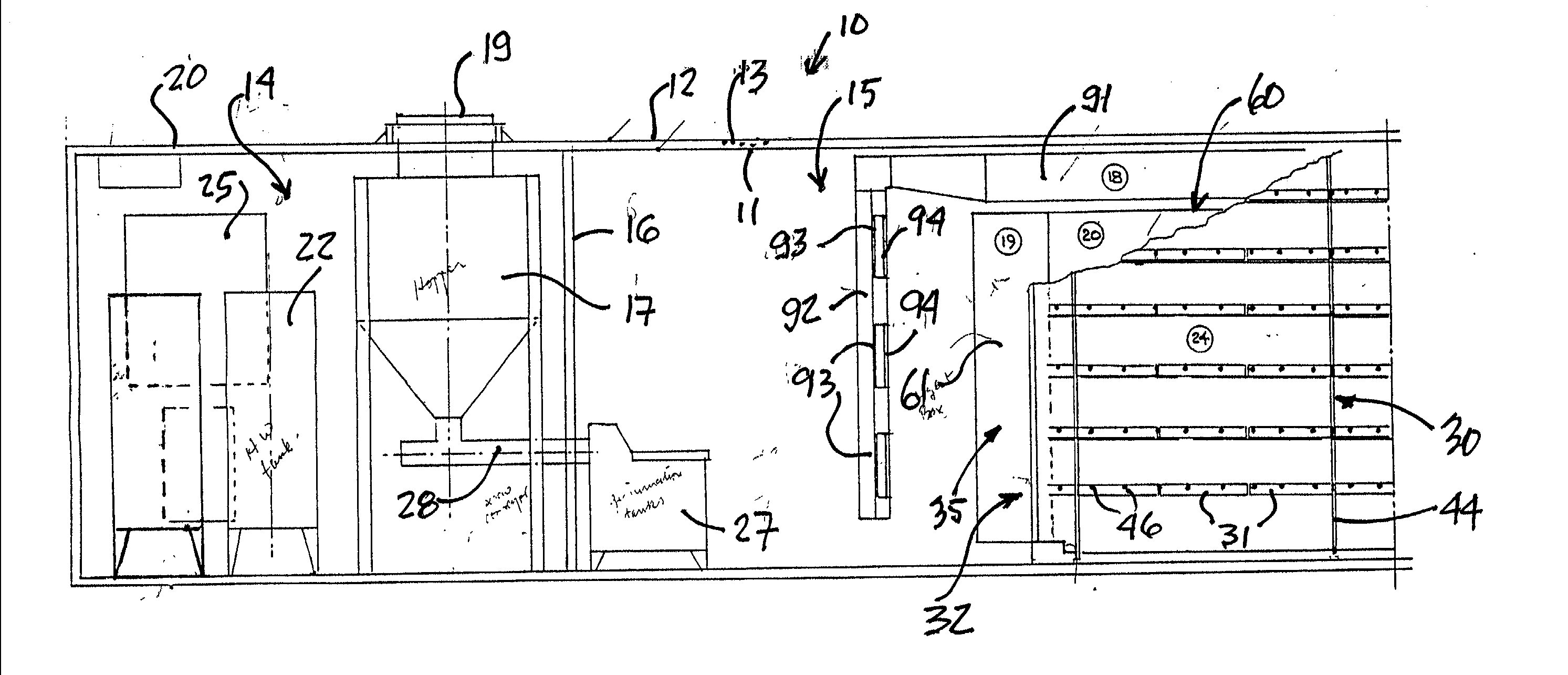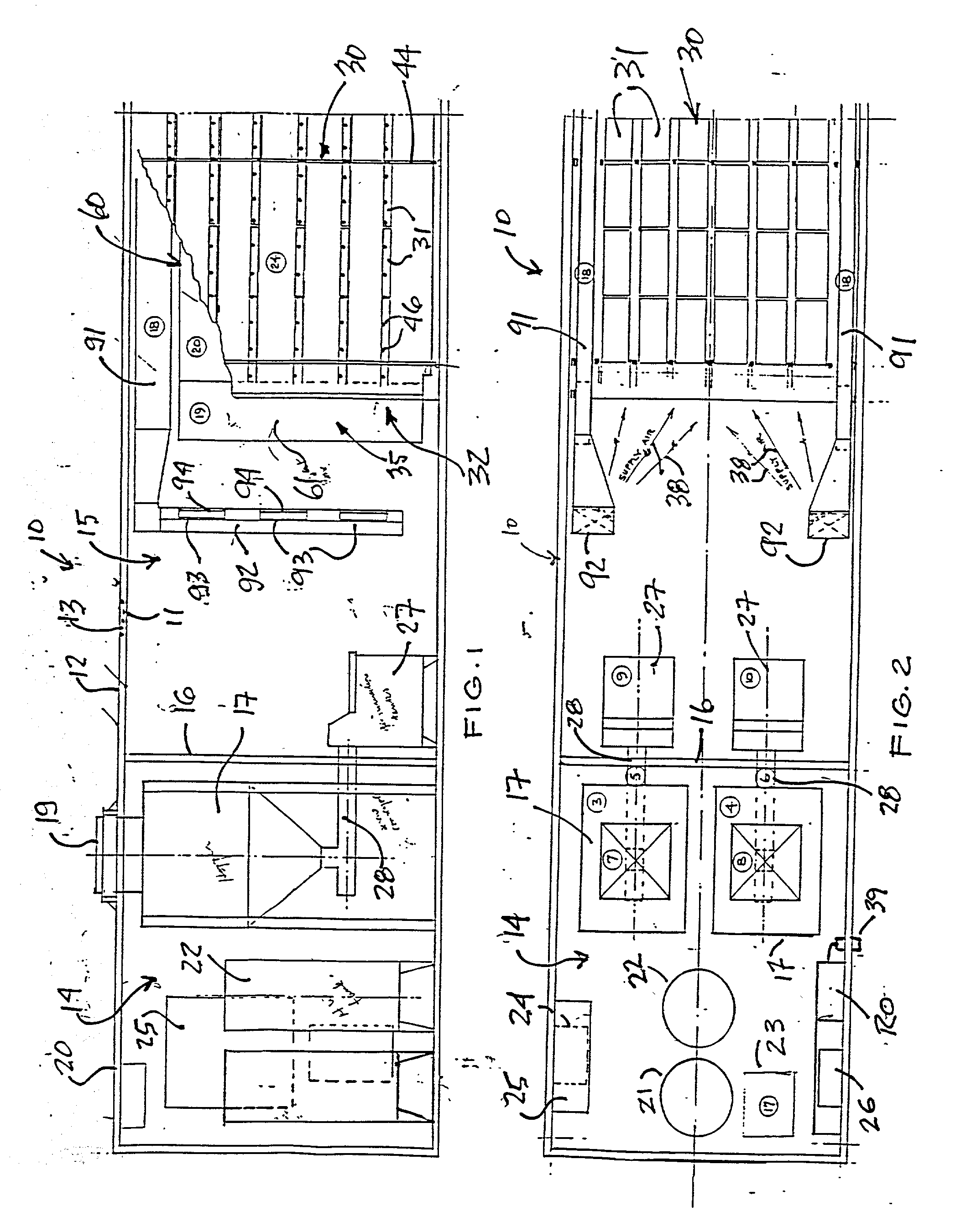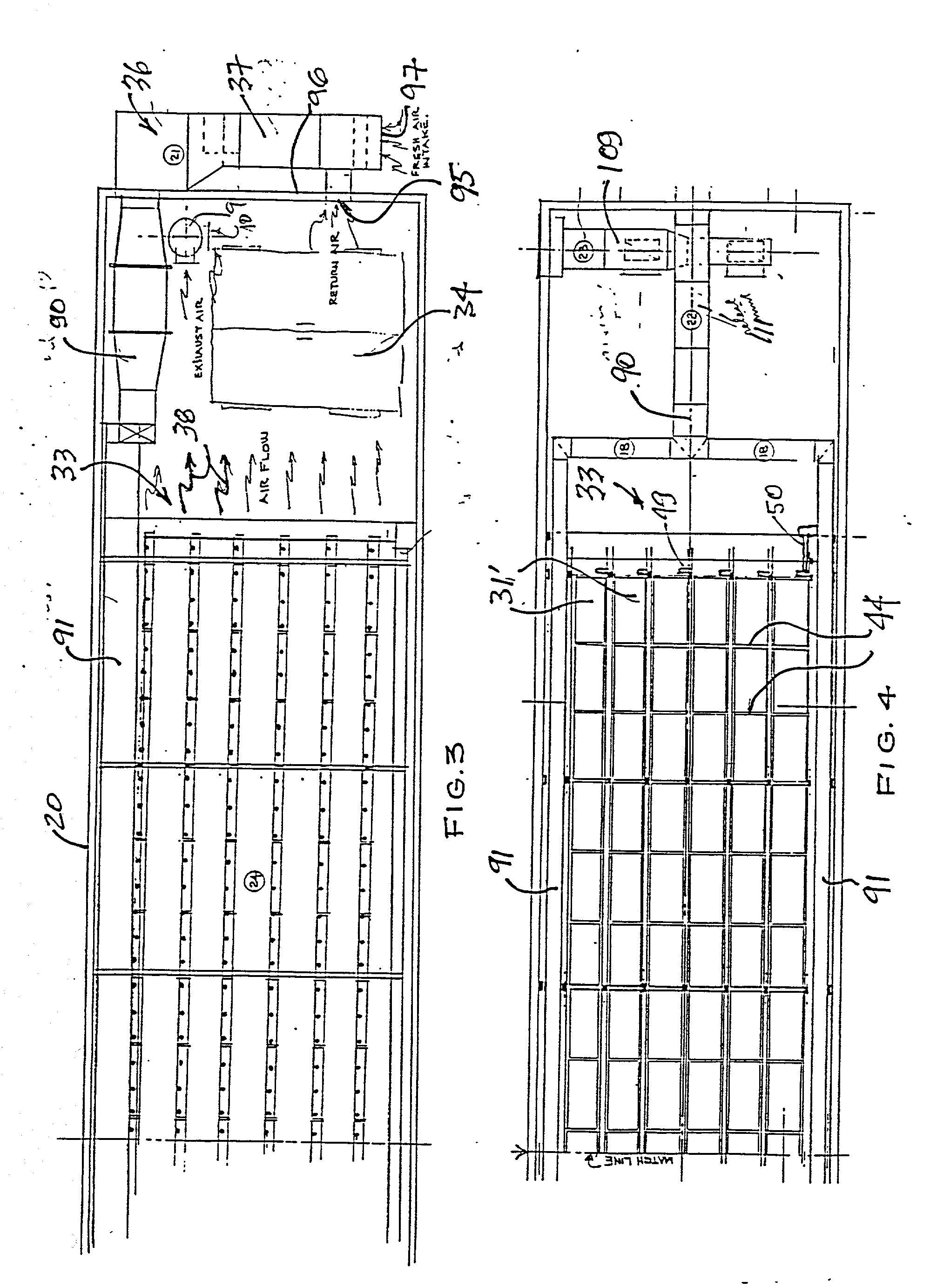Hydroponic growing enclosure and method for the fabrication of animal feed grass from seed
- Summary
- Abstract
- Description
- Claims
- Application Information
AI Technical Summary
Benefits of technology
Problems solved by technology
Method used
Image
Examples
Embodiment Construction
[0049] Referring to the drawings, and more particularly to FIGS. 1 to 7, there is shown the self-contained hydroponic growing enclosure 10 of the present invention. The enclosure is fabricated from stainless steel, or at least has its inner sheeting 11 made from stainless steel, and an outer wall sheeting 12. An insulating material 13 is disposed between the sheetings 11 and 12, whereby the enclosure can be temperature-controlled to fabricate animal feed grass from seed and independent of outside climatic conditions. The enclosure may be of a trailer type or mounted on a flat bed and disposed on site, with the operational equipment therein assembled on site by the use of conventional tools.
[0050] As shown more clearly in FIGS. 1 to 4, the growing enclosure comprises a control compartment section 14, which is isolated from a growing and harvest compartment section 15 by a separator wall 16, the outer surfaces thereof being covered with stainless-steel sheeting.
[0051] The control comp...
PUM
 Login to View More
Login to View More Abstract
Description
Claims
Application Information
 Login to View More
Login to View More - R&D
- Intellectual Property
- Life Sciences
- Materials
- Tech Scout
- Unparalleled Data Quality
- Higher Quality Content
- 60% Fewer Hallucinations
Browse by: Latest US Patents, China's latest patents, Technical Efficacy Thesaurus, Application Domain, Technology Topic, Popular Technical Reports.
© 2025 PatSnap. All rights reserved.Legal|Privacy policy|Modern Slavery Act Transparency Statement|Sitemap|About US| Contact US: help@patsnap.com



